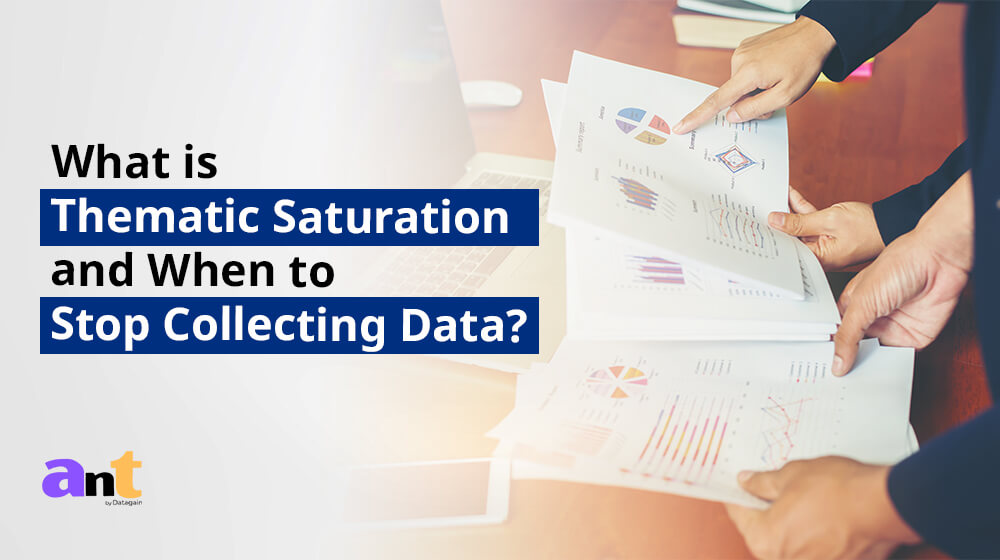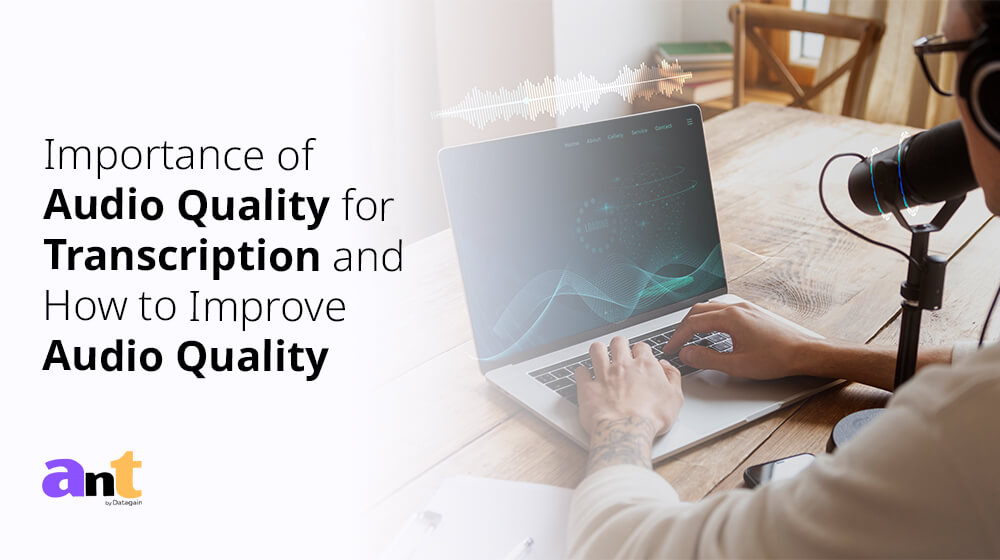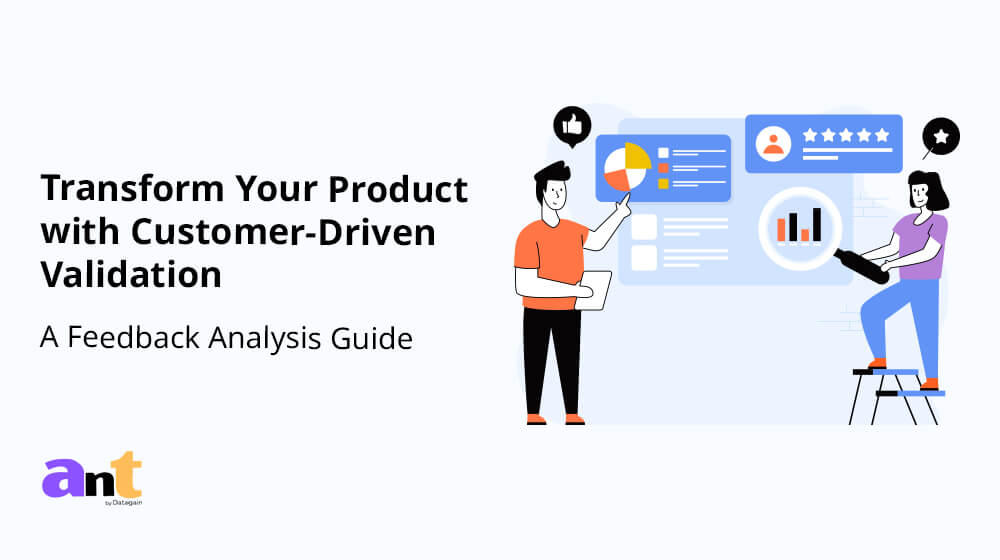When doing research or trying to understand how measurements have changed or how people think, we frequently use qualitative data. Typically, qualitative data comes from:
- Transcripts of interviews
- Open-ended survey questions
- Transcripts from call centers
- Documents and texts
- Recordings of audio and/or video
- Presenting facts
Qualitative data has more depth of understanding than quantitative data. It may provide us with the answers we need, help in the creation of theories, and detailed knowledge. Qualitative data analysis is difficult; with quantitative data, there aren’t any widely used tools for qualitative data. Most qualitative data analysis is carried out manually. This is evolving due to two current developments. Understanding human language is the goal of natural language processing. The use of user-friendly software is popular among businesses and researchers. Both help in the automation of qualitative data analysis.
In this post, we’ll show you how to analyze qualitative data effectively. We’ll show you both manual and automatic methods for doing the analysis utilizing NLP- enabled tools. We will also walk you through the process of doing manual analysis, explain what goes into it, and discuss how technology might help automate it. Since it is a less expensive, quicker, and equally accurate, fully automated analysis of qualitative data is becoming more and more popular.
Methods for Qualitative Data Analysis
After the data has been collected, several analysis strategies are available
Content Analysis: The broad scope of content analysis may include other analysis techniques. Thematic analysis is part of the analysis. The content analysis uses words, concepts, and themes to identify the patterns that emerge from the text. Content analysis can be used to quantify the relationship between all of the content.
Narrative Analysis: Narrative analysis looks at the stories people tell and the language they use to make sense of them. It is useful to get a deep understanding of customers’ perspectives on a specific issue.
Discourse Analysis: A thorough understanding of the political, cultural, and power dynamics can be obtained through discourse analysis. Brand strategists use discourse analysis to understand why a group of people feel a certain way about a brand or product.
Thematic Analysis: Thematic analysis can be used to understand the meaning of words. Key insights into data can be quantified with the help of these meaningful themes. A coding frame that captures themes in terms of codes is called a category.
The key differences between manual and automated procedures
Step 1: Gathering and compiling your qualitative information. Also, place your qualitative data into order and connect with it.
Step 2: Coding your qualitative data and searching for insights in it.
Step 3: Reporting on the results of your analysis is the last step.
The organization trying to evaluate customer feedback in order to enhance customer experience is using step-by-step manual and automated procedures. Whatever the focus of your study, you may use the same procedures.
Methods for doing research and collecting qualitative data
A qualitative research project begins with data collecting. The process of collecting data is called data collection and there is a lot of qualitative data that is dispersed. The majority of businesses use conventional methods to collect qualitative data. The data is usually held in databases, knowledge bases, and papers. Therefore, it’s important to consider which data to use based on the base of your study.
Present qualitative feedback and unused qualitative data sources
As customers find it simpler to interact across a variety of platforms, companies are getting larger volumes of both requested and unrequested qualitative feedback. The majority of businesses have made investments in customer services. These new channels allow businesses to get more customer feedback and also collect more feedback data. This data contains a lot of information and is already existing. When you have a fresh query about your target audience, you don’t need to start a research project or organize a focus group. Most of the solutions are inside the data you have.
There are ways to link this information to a feedback analysis solution, but it is often kept in a centralized database or third-party solution. You may not have considered online qualitative data sources. Valuable data about your customers can be found in online forums, review sites, and online communities. If you’re thinking of doing a qualitative benchmark analysis, the internet is your best friend. A great way to do a rival benchmark study is to get feedback from competitors on websites like Trustpilot, G2, Capterra, Better Business Bureau, or on app stores. You may also use a tool like DataMiner to get the reviews, or you can use customer feedback analysis software that integrates with social networking and review sites.
And once you have your recording in place, you can start your transcription process or better yet, enlist Ant’s service to help you with it which frees up your time to focus on other areas of your work.
Qualitative data should be manually linked and organized
There is a problem when everyone has access to a lot of qualitative data. Before feedback can be assessed and given a value, it must be gathered in one location. If the data is readily available in one location and evaluated consistently, you will find it simpler to make decisions based on it. The method of organizing qualitative data is to plot it into a spreadsheet. Large spreadsheets are typically shared by the research and support teams, and various business units analyze the qualitative feedback data on their own. The feedback is often held in separate silos because each team gathers and arranges the data in a way that works best for them. When you arrange your data in this way, you are more likely to import it into another piece of software. If you decide to use a database, you have to use an application programming interface to send the input to another program.
Computer-assisted qualitative data analysis software (CAQDAS)
When using the manual analysis technique, qualitative data is usually loaded into CAQDAS software for coding. Software for computer-assisted qualitative data analysis was popularized by companies like MAXQDA, which helped with the coding and organization of data. It is possible to investigate several interpretations of your data analysis with the help of the organization of your data, but you must still manually code the data, identify the themes, and do the analysis.
Arranging your qualitative data in a feedback platform and a repository
Uploading your qualitative data into a feedback repository, where it can be combined with your other data and conveniently accessed and labeled, is one approach to managing it. For the purposes of qualitative research data, several software programs serve as a central repository. Dovetail concentrates on transcriptions of audio and video. The software allows you to tag your transcriptions. It is possible to add qualitative data such as research papers, survey results, customer interviews, and support chats. Dovetail has similar features to EnjoyHQ. It has a more sophisticated search engine, but it has a higher starting subscription cost. A feedback platform would be useful if you have a lot of qualitative data. Software that may be used to automate sentiment analysis is known as a feedback platform. The data is arranged and examined by the platform. Data prepared in a spreadsheet can be imported into feedback platforms. It is ready to be themed and coded once the data has been organized within the feedback analytics platform.
Coding your qualitative data and instructions for manual coding
The feedback data is either within your spreadsheet or within your feedback platform. The next step is to code your feedback data so we can extract meaningful insights. You can identify themes in the data and the relationships between them with the help of coding. To simplify the coding process, you will take small samples of your customer feedback data, come up with a set of codes, or categories capturing themes, and label each piece of feedback, systematically, for patterns and meaning. You will revise and refine the codes for greater accuracy and consistency as you go. Most of the process will be done for you if you choose to use a feedback platform. The terms to describe different categories of meaning can be hard to understand.
Instructions
- Decide if you will use either method. The process of assigning codes to qualitative data is called deductive coding. Native coding is the process of making codes based on the data. You need to label codes when they arise from the data and also need to consider the pros and cons of each coding method.
- You can get a sense of what the feedback reveals by reading it. Adding new codes and revising the code description are part of step 2. To make sure there are no inconsistencies and that nothing has been overlooked, go through everything again.
- Group your codes with a code frame. The organizational structure of your codes is called the coding frame. It will be easier to derive insights from your analysis if you have a Hierarchical code frame.
- The common themes in your feedback data can be seen based on the number of times a particular code occurs.
The quality of insights can be increased by finding important insights and manually generating sub-codes
If your code frame only has one level, it can be hard to derive useful insights. At this point, it is beneficial to develop sub- codes for your main codes. As you read through and code your feedback data, you may make sub-codes. Even if it takes time, this practice will enhance your analysis. You can get insight into which customer service problems you can immediately address by calculating the Frequency of these sub-codes.
Analyze the data with a text analytics system after manually visualizing it
Customers are categorized by firms and can use their own groups in your qualitative analysis. It is a practice of segmenting consumers into smaller groups. You can choose to group data by demographic, interest, and other data types. If one of your customer segments is considered unimportant to your business, but they are the cause of nearly all customer service complaints, it may be in your best interest to focus attention elsewhere. You can use the formulas to see the key insights in your data. If you are measuring a score with your feedback, the formulas we will suggest are crucial. This is a key visualization if you are collecting a metric with qualitative data. You can use this simple formula to calculate code impact on NPS by subtracting B from A. To view the data, use a bar chart.
Depending on the number of codes, the correlation between the two sequences may be either positive or negative. Plotting code frequency vs code correlation’s absolute value is necessary. Automatic text analysis tools can be used to automatically extract codes and sub-codes from the data. It makes it easier to figure out what’s causing poor or positive results. To find a wide range of insightful information in the data. The built-in sentiment analysis feature of text analytic software gives you emotional context for your comments, which is an advantage. Adding human input to the technology might sound counterintuitive since the move away from manual research is generally about reducing the human element. This is to make sure important business nuances are not missed during coding.
Use PowerPoint to narrate your data and visualization tools, and show your results
The focus is on communicating the narrative to the audience as the codes are fully developed. Stakeholders need to discuss and debate the findings and insights of the qualitative research before they can come up with a meaningful course of action. Qualitative researchers often use the tried-and-true method of presenting their findings in a series of graphs, tables, and other graphics. The analyzed data can be shared with other data visualization software. The most preferred options are Power BI and Tableau. Visualization tools allow for more time to be spent on developing an engaging narrative that highlights the insights in digestible portions for executive teams to examine, rather than on the time-consuming task of creating charts to graphically detect trends.
There are people who are interested in the manual approach because it’s familiar and they don’t want to spend a lot of money on new software. Artificial intelligence can crunch, score, and analyze a ton of feedback from one system in one go with the ability to collect a free flow of qualitative feedback at the same time as the metric. When using qualitative data, it’s important to have the right tools and processes in place. Know how to do analysis in a systematic way using accurate and timely managed services offered by Ant.

















